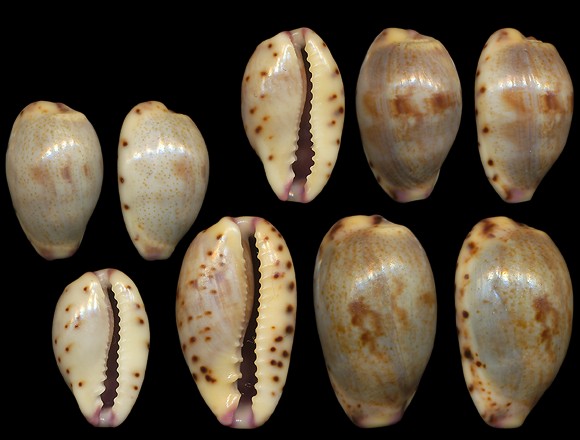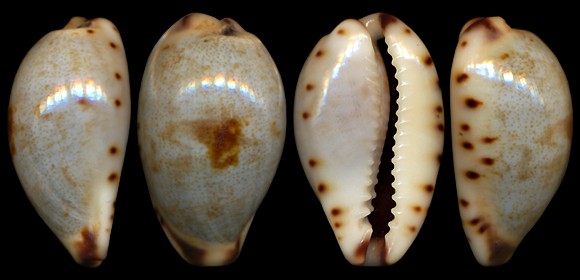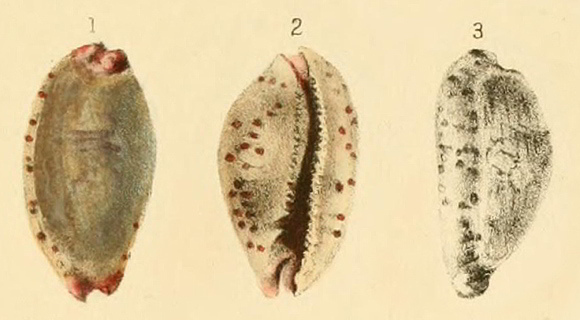
Omnivorous in the infralittoral.
Original taxon: Cypraea notata.
Shikmona beach, Haifa, NW. Israel. 14-18mm.

Differs from gracilis s.s by the colour of the animal, which is red in notata and grey in gracilis. Also, the blotches on the extremities of the shell are often more marked than in gracilis.
Egyptian specimen from El Arish, North Sinai. 17,5mm.

« …the extremities on both sides and the marginal plait of a violet colour. […] This handsome cowrie, of which I have only seen the one above described, was found by Mr. David W. Ferguson of the city of Brooklyn, among a small lot of Cypraeae said to have been obtained at Singapore, among which were C. zigzag Linn., C. fimbriata Gm., C. poraria Linn., and several other species well known as inhabitants of the great Indo-Pacific province. The specimen is now in Mr. Ferguson’s Cabinet, and to him I am indebted for the opportunity of describing it. It appears to be very distinct from any of the species of the genus hitherto described. In the color of the extremities it has some resemblance to C. fimbriata Gm., and C. microdon Gray, but the much larger size, the more elevated back, the narrower umbilicated spire, the color of the base and sides, the absence of any appearance of bands, and especially the large and distinct spots on the margins, at once distinguish it from either of those species.
The teeth on the posterior and middle portions of the columellar lip are also smaller than in those species, and the number of teeth in both lips is greater than in C. fimbriata and less than in C. microdon. In its general form and appearance it has some resemblance to C. Goodallii and C. contaminata, but in every other respect it is very dissimilar. With all these distinctive characters, I cannot hesitate to regard it as very different from any species with which I am acquainted, although I have only seen a single specimen. »
The teeth on the posterior and middle portions of the columellar lip are also smaller than in those species, and the number of teeth in both lips is greater than in C. fimbriata and less than in C. microdon. In its general form and appearance it has some resemblance to C. Goodallii and C. contaminata, but in every other respect it is very dissimilar. With all these distinctive characters, I cannot hesitate to regard it as very different from any species with which I am acquainted, although I have only seen a single specimen. »